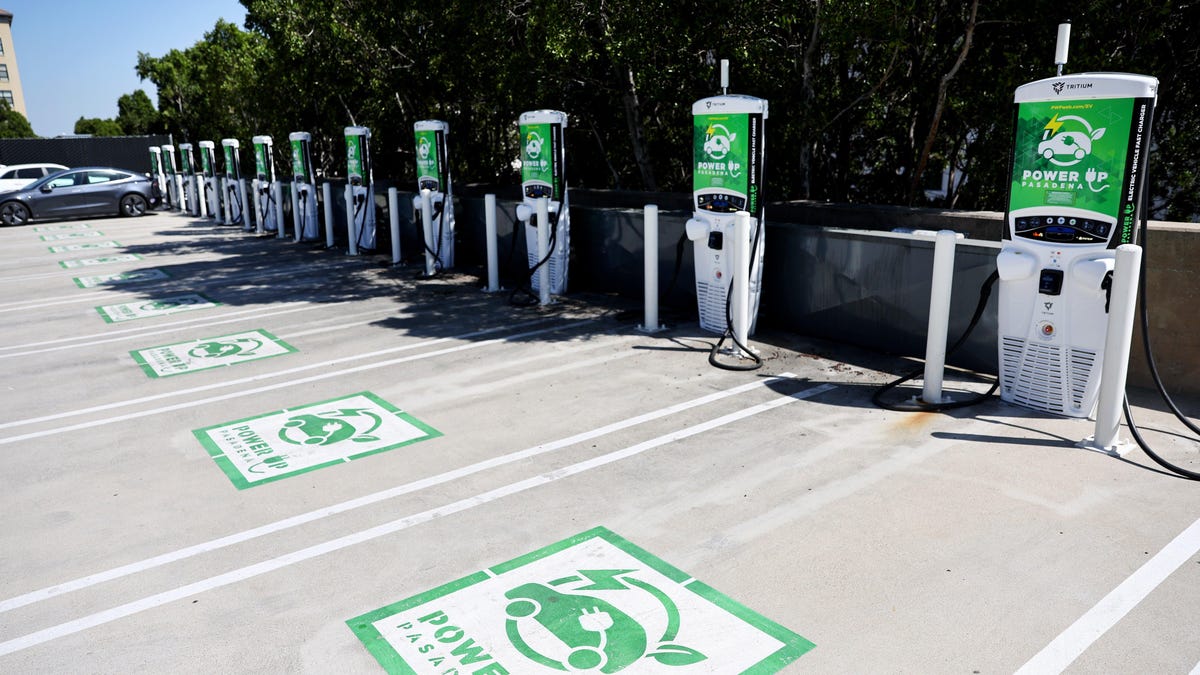Feds Investing $5 Billion in Nationwide EV Charging Network

Cars recharge at a Power Up fast charger station on April 14, 2022 in Pasadena, California. Photo: Mario Tama (Getty Images)
All 50 states, Washington D.C. and Puerto Rico submitted plans this week for a slice of $5 billion dollars in federal funds to build a cross-country EV charging network. The money could build 500,000 direct-current fast chargers, hopefully soothing American range anxiety fears in our patchwork quilt of a nation.
The funds are coming out of the $1 trillion bipartisan infrastructure bill President Biden signed into law late last year. The administration is aiming for half of all vehicles sold in the U.S. to be electric by 2035, but that dream is not going to happen if Americans can’t get over their range anxiety. Currently, there are about 20,000 DC fast chargers dotting the U.S., according to Axios. That’s just isn’t enough to inspire confidence in folks who at least want the option to drive across the country on a daily basis.
There are some caveats with this cash, of course. The system needs to be open to all vehicles with similar structures for billing drivers for charging. Right now, different networks in different states do things differently. Electrify America, for instance, wants to charge drivers based on power usage, but some states explicitly forbid the practice. These states require chargers to bill drivers by the minute.
There’s also the hurdle of making chargers accessible to all vehicles. Tesla, for example, will need to open its superchargers to all EVs in the U.S. later this year. Open-access Superchargers are great news for EV owners, who will suddenly have their network of places to “fill up” expanded over night, and Tesla, which will benefit from the added revenue stream.
Finally, it wouldn’t be a federal program without some regulations: Guidelines dictate that these chargers should be built along freeways and highways — main arteries of traffic — so drivers aren’t searching along back roads for juice. In fact, the chargers will need to be within a mile of interstate exits and no more than 50 miles apart from one bank of chargers to the next. This seems like a good idea, but particularly western states want more flexibility with EV placement. Some places have long stretches of absolute nothingness along their freeways after all. And the chargers need to be DC fast chargers, which can zap an EV up to 80 percent in 15-20 minutes rather than a clunky hours-long recharge from slower chargers.
G/O Media may get a commission
CBD for active lifestyles
In both topical and capsule form, Elixinol CBD line is THC-free CBD that helps your muscles recover.
States have five years to build the charging networks. The White House is working with private companies to get the network up and running, with a goal of building 250,000 chargers a year.



